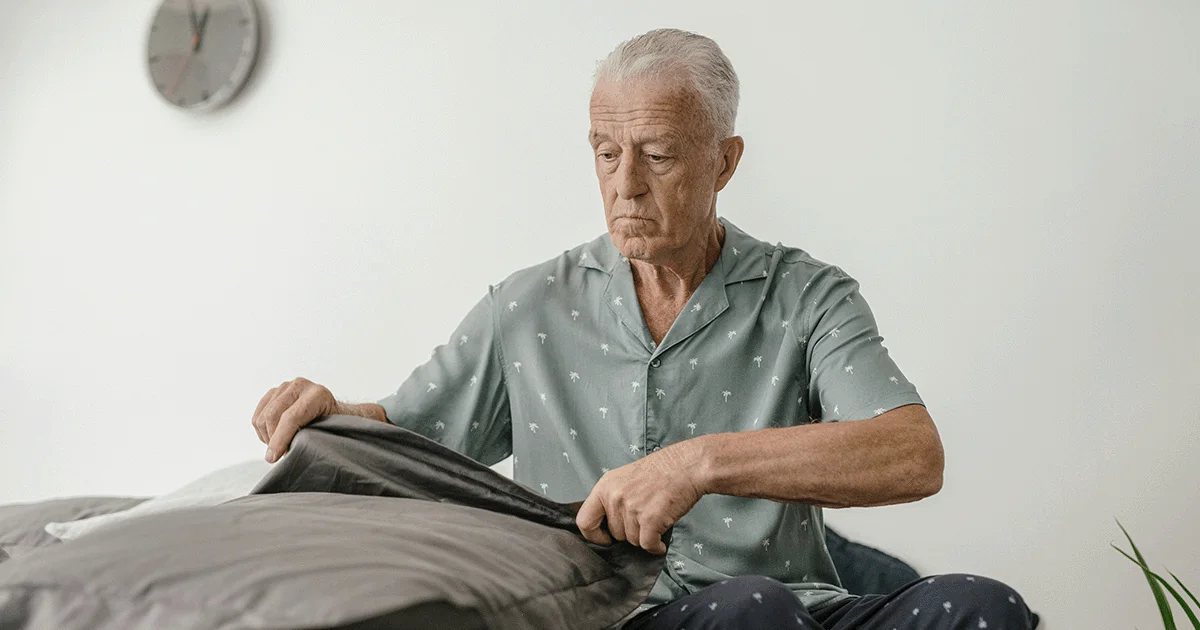Key takeaways
Shockwave therapy is a non-invasive treatment that has traditionally been used to help heal injured or inflamed bones, muscles, and tendons.
More recently, shockwave therapy has been used off-label for erectile dysfunction. It’s thought to work by stimulating blood flow to the penis, though more research is needed.
Shockwave therapy for ED is not approved by the FDA and isn’t likely to be covered by insurance, meaning it could cost quite a bit more than other FDA-approved treatments like ED medication.
Here's what we'll cover
Here's what we'll cover
Here's what we'll cover
Key takeaways
Shockwave therapy is a non-invasive treatment that has traditionally been used to help heal injured or inflamed bones, muscles, and tendons.
More recently, shockwave therapy has been used off-label for erectile dysfunction. It’s thought to work by stimulating blood flow to the penis, though more research is needed.
Shockwave therapy for ED is not approved by the FDA and isn’t likely to be covered by insurance, meaning it could cost quite a bit more than other FDA-approved treatments like ED medication.
If you’re experiencing erectile dysfunction (ED) and traditional treatments aren’t working, you may be wondering whether there are other options out there.
One treatment you may not have heard of is shockwave therapy. Though not approved by the U.S. Food and Drug Administration (FDA), there is promising research around shockwave therapy for ED, especially for certain types of erectile dysfunction such as vasculogenic ED (more on this later). Here’s how it works.
What is shockwave therapy?
If you’ve never heard of shockwave therapy, it isn’t as scary as it sounds. More commonly used for joint pain, inflammation, and repetitive strain injuries, shockwave therapy – also known as low-intensity extracorporeal shockwave therapy (LiSWT) – is a non-invasive treatment that utilizes shockwaves to stimulate blood flow and tissue growth.
During a treatment session, a trained clinician uses a small device similar to a wand to pass shockwaves into the affected area. These shockwaves cause microscopic injuries that trigger the body’s healing process. It’s similar to how an ultrasound works, except higher-amplitude shockwaves are used. The treatment isn’t supposed to be painful, but some people report experiencing minor discomfort.
Sessions can last anywhere from five to 20 minutes, but how long sessions are and how many you need all depends on what’s being treated and your unique needs. Shockwave therapy is commonly used to help with:
Back, shoulder, and knee pain
Inflamed or stiff joints
Plantar fasciitis
Shin splints
Sports injuries
Tendonitis
Historically, shockwave therapy has been reserved for injuries involving bones, muscles, and tendons, but more recent research reveals it could have benefits for other conditions – including erectile dysfunction.
How does shockwave therapy for ED work?
There are many different causes of ED, but one common cause is when blood flow to the region is impacted either due to injury or an underlying health condition like heart disease. In these cases, it’s easy to see why shockwave therapy may work. Shockwave therapy may help repair blood vessels in the penis and improve blood flow.
To treat ED using shockwave therapy, a practitioner uses a handheld medical tool to deliver low-intensity shockwaves to the shaft of the penis. Before treatment starts, your practitioner will set the device to deliver a set number of shocks per minute. Since shockwave therapy for erectile dysfunction is not yet approved by the FDA, there’s no standardized protocol for how many shocks per minute are ideal and how long each treatment session should last.
In one study, the most significant results for ED were seen doing two sessions per week for six weeks (the other group did one session per week). In studies, each session lasts about 15-20 minutes, but again, without standard rules and regulations, how long each session lasts (and how many you need) depends on where you’re receiving treatment, what brand of equipment is used, and your individual anatomy.
Is shockwave therapy for ED effective?
The big question: does shockwave therapy for erectile dysfunction actually work? A handful of studies have found that shockwave therapy may be beneficial for ED.
One small study of 80 patients found low-intensity shockwave therapy to be effective in 60% of participants who did not respond to PDE5 inhibitors, a group of oral medications often used as a first-line treatment for ED. After the 12-month follow-up, more than 90% of participants maintained their response. In other studies, the most significant effects were seen in people with vasculogenic ED, a common type of ED caused by damaged, blocked, or improperly functioning blood vessels, with or without concomitant use of PDE5 inhibitors..
The exact mechanism behind how shockwave therapy for ED works is unknown, but the theory is that the shockwaves boost blood vessel function and stimulate the formation of new blood vessels in the penis, encouraging more blood flow to the area. Research has also found that shockwave therapy can trigger nitric oxide production; nitric oxide promotes blood flow and relaxes muscles in the penis, two components crucial to erectile function.
Most studies on shockwave therapy for ED show positive short-term results (12 months or less), but more studies are needed to see if it’s a viable treatment long-term.
Is shockwave therapy for ED safe?
Even though shockwave therapy for ED isn’t yet approved by the FDA, research has indicated it is safe and well-tolerated with a low risk for side effects for most people.
So far, no studies have reported significant side effects or adverse reactions. Some people can experience discomfort at the treatment site, minor swelling, and skin redness. There have been concerns that administering shockwaves near the testicles may impact hormones or reproductive function, but studies have found the therapy has not been shown to affect testicular function.
Most people with ED can try shockwave therapy, but it might not be helpful for everyone; for example, if you’re experiencing ED due to mental factors like depression or anxiety, psychotherapy or medication (or a combination of both) might be a better option.
Research so far indicates shockwave therapy is beneficial for people with vasculogenic ED. In one study, shockwave therapy worked best in those with mild vasculogenic ED either in conjunction with other ED treatments like PDE5 inhibitors or when traditional medication did not work.
How much does shockwave therapy for ED cost?
The bad news about shockwave therapy for ED is because it’s an off-label treatment (meaning not FDA-approved), it’s unlikely to be covered by insurance. Some research indicates the average price per session to be $491 and an average treatment course (roughly six sessions) to be $3,338. Because multiple sessions over weeks or months are usually required, the price tag for this treatment can add up quickly.
Alternatives to shockwave therapy for ED
Though beneficial for some, shockwave therapy is not typically a first-line treatment for ED. Luckily, there are lots of other treatment options if you have erectile dysfunction.
One of the most effective treatments for ED is oral medications. FDA-approved options include:
Stendra (avanafil)
For people who can’t take pills or want to get an erection quickly, another option, Ro Sparks, a fast-acting Viagra/Cialis tablet that dissolves under the tongue. and works in an average of 15 minutes
If ED medication taken by mouth isn’t a good fit, alprostadil is another FDA-approved medication for ED that is available as an injection or a suppository. No matter what treatment you’re trying, lifestyle changes like regular exercise and eating a heart-healthy diet are important parts of ED prevention and management.
Psychological factors can also play a big role in erectile function, which is why managing mental health is another important aspect of ED treatment. For those with psychogenic ED, working with a psychotherapist or sex therapist can help.
The right treatment for you may depend on the underlying cause of your ED. In many cases, a combination of treatments is most effective. Whether you’re trying medication, lifestyle changes, or shockwave therapy (or maybe all three), talk to a healthcare provider who can help find the right option for you.
DISCLAIMER
If you have any medical questions or concerns, please talk to your healthcare provider. The articles on Health Guide are underpinned by peer-reviewed research and information drawn from medical societies and governmental agencies. However, they are not a substitute for professional medical advice, diagnosis, or treatment.
Viagra Important Safety Information: Read more about serious warnings and safety info.
Cialis Important Safety Information: Read more about serious warnings and safety info.
References
Bechara, A., Casabé, A., De Bonis, W., et al. (2016). Twelve-Month Efficacy and Safety of Low-Intensity Shockwave Therapy for Erectile Dysfunction in Patients Who Do Not Respond to Phosphodiesterase Type 5 Inhibitors. Sexual Medicine, 4(4). doi: 10.1016/j.esxm.2016.06.001. Retrieved from https://www.ncbi.nlm.nih.gov/pmc/articles/PMC5121537/
Bocchino, A. C., Pezzoli, M., Martínez-Salamanca, J. I., et al. (2023). Low-intensity extracorporeal shock wave therapy for erectile dysfunction: Myths and realities. Investigative and Clinical Urology, 64(2). doi: 10.4111/icu.20220327. Retrieved from https://www.ncbi.nlm.nih.gov/pmc/articles/PMC9995960/
Davies, K. P. (2015). Development and Therapeutic Applications of Nitric Oxide Releasing Materials to Treat Erectile Dysfunction. Future Science OA. doi: 10.4155/fso.15.53. Retrieved from https://www.tandfonline.com/doi/full/10.4155/fso.15.53#:~:text=Abstract,penis%20resulting%20in%20an%20erection
de Oliveira, P. S. & Ziegelmann, M. J. (2021). Low-intensity shock wave therapy for the treatment of vasculogenic erectile dysfunction: a narrative review of technical considerations and treatment outcomes. Translational Andrology and Urology, 10(6). doi: 10.21037/tau-20-1286. Retrieved from https://www.ncbi.nlm.nih.gov/pmc/articles/PMC8261418/
Kalyvianakis, D., Memmos, E., Mykoniatis, I., et al. (2018). Low-Intensity Shockwave Therapy for Erectile Dysfunction: A Randomized Clinical Trial Comparing 2 Treatment Protocols and the Impact of Repeating Treatment. The Journal of Sexual Medicine, 15(3). doi :10.1016/j.jsxm.2018.01.003. Retrieved from https://pubmed.ncbi.nlm.nih.gov/29396020/
Lurz, K., Dreher, P., Levy, J., et al. (2020). Low-Intensity Shockwave Therapy in the Treatment of Erectile Dysfunction. Cureus, 12(11). doi: 10.7759/cureus.11286. Retrieved from https://www.ncbi.nlm.nih.gov/pmc/articles/PMC7707887/
Manfredi, C., Arcaniolo, D., Amicuzi, U., et al. (2022). Impact of extracorporeal shockwave therapy for erectile dysfunction and Peyronie's disease on reproductive and hormonal testicular function. Andrology, 10(7). doi: 10.1111/andr.13240. Retrieved from https://www.ncbi.nlm.nih.gov/pmc/articles/PMC9540478/
Reddy, B., Nehra, A., Kirubakaran, R., et al. (2018). Extracorporeal shockwave therapy for the treatment of erectile dysfunction. Cochrane Database of Systematic Reviews. doi: 10.1002/14651858.CD013166. Retrieved from https://www.cochranelibrary.com/cdsr/doi/10.1002/14651858.CD013166/full
Sokolakis, I. & Hatzichristodoulou, G. (2019). Clinical studies on low intensity extracorporeal shockwave therapy for erectile dysfunction: a systematic review and meta-analysis of randomised controlled trials. International Journal of Impotence Research, 31, 177–194. doi:10.1038/s41443-019-0117-z. Retrieved from https://www.nature.com/articles/s41443-019-0117-z?utm_medium=affiliate&utm_source=commission_junction&utm_campaign=CONR_PF018_ECOM_GL_PBOK_ALWYS_DEEPLINK&utm_content=textlink&utm_term=PID100090071&CJEVENT=197bcdd8420111ef821d014f0a82b820#citeas
Tenforde, A. S., Borgstrom, H. E., DeLuca, S., et al. (2022). Best practices for extracorporeal shockwave therapy in musculoskeletal medicine: Clinical application and training consideration. PM&R, 14(5). doi: 10.1002/pmrj.12790. Retrieved from https://www.ncbi.nlm.nih.gov/pmc/articles/PMC9321712/
Weinberger, J. M., Shahinyan, G. K., Yang, S. C., et al. (2022). Shock Wave Therapy for Erectile Dysfunction: Marketing and Practice Trends in Major Metropolitan Areas in the United States. Urology Practice, 9(3). doi: 10.1097/UPJ.0000000000000299. Retrieved from https://www.auajournals.org/doi/10.1097/UPJ.0000000000000299
Yao, H., Wang, X., Liu, H., et al. (2022). Systematic Review and Meta-Analysis of 16 Randomized Controlled Trials of Clinical Outcomes of Low-Intensity Extracorporeal Shock Wave Therapy in Treating Erectile Dysfunction. American Journal of Men's Health, 16(2). doi: 10.1177/15579883221087532. Retrieved from https://pubmed.ncbi.nlm.nih.gov/35319291/












